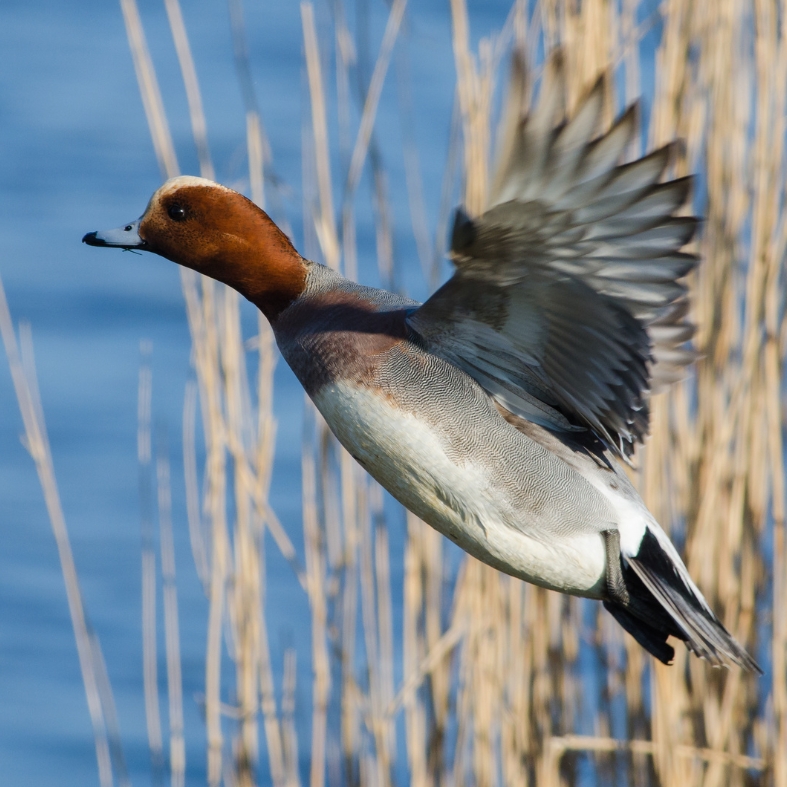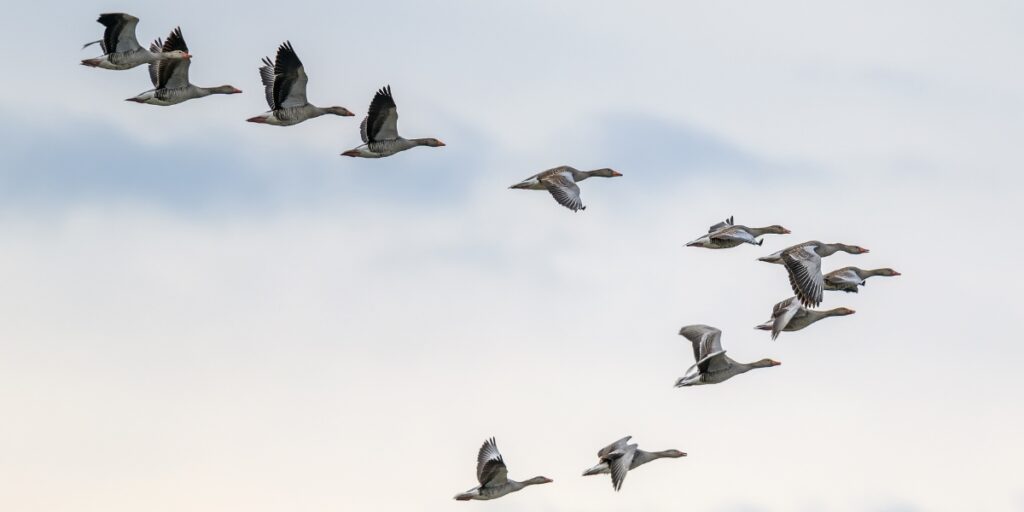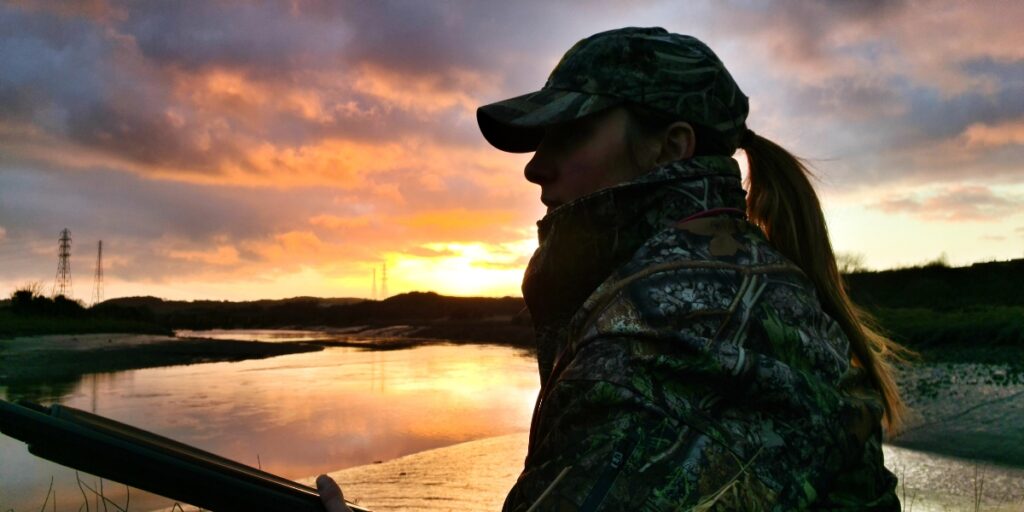
West Country wildfowlers help boost mallard numbers
In a joint effort to combat the declining mallard population, the BBWA and the WWT came together to install duck nest tubes on a local marsh.
Get information on the legal shooting season for mammals and birds in the UK.
Apply for funding for your project or make a donation today
Comprehensive information and advice from our specialist firearms team.
Everything you need to know about shotgun, rifle and airgun ammunition.
Find our up-to-date information, advice and links to government resources.
Everything you need to know on firearms law and licensing.
All the latest news and advice on general licences and how they affect you.


BASC wildfowling advisor Chris Wright explains how understanding the established global routes followed by migratory birds is key to ensuring the future of sustainable wildfowling.
Flyways… without them many of the species that frequent our coastal marshes and inland wetlands, species that we know and love, would be lost.
You see, except for a few feral geese, a handful of duck and some of the waders that choose to breed in the UK, most of our wildfowl species are migratory, arriving on our shores as the weather turns. The stark reality is that without these invisible pathways, our shores would be a much quieter place.

To put this into perspective, it’s estimated that just over 8.2 million wildfowl (encompassing wildfowl, wader and rail species) migrate to the UK each year.
When we compare that to the estimate of just over 1.1 million that we think breed here, that’s quite a difference. If we do the maths, that means in a typical winter we would have approximately 9.3 million lawful wild quarry to pursue. Remove the migrants and we are left with just the 1.1 million – an 88.2 per cent reduction in bird numbers. Now we really can see why flyways are so important to those who shoot in the UK.
Flyways serve as natural corridors, guiding migratory birds to suitable habitats where they can find food, shelter, safety and a partner. Around 2,000 species around the world use flyways during their annual migrations, travelling thousands of miles across continents and oceans between breeding and wintering grounds.
For wildfowl enthusiasts and hunters alike, understanding flyways is crucial to inform effective conservation and sustainable shooting practices.
There are a number of recognised flyways which are used by migratory wildfowl, linking breeding areas in the Arctic and subarctic regions with wintering grounds in Europe and Africa. Some of these are included below.
This is one of the most significant flyways for migratory birds travelling between their breeding grounds in the Arctic and subarctic regions and their wintering areas in Europe and Africa. The UK serves as a critical stopover and wintering site for many species using this flyway.
Birds breeding in the West Siberian region often use this flyway to reach their wintering grounds in Western Europe and Africa. The UK is a vital stopover and wintering location along this route.
This flyway encompasses migration routes passing through the North Sea and Baltic Sea regions. Birds using this route often stopover in the UK, especially along the eastern coast.

Conservation measures to enhance wildfowl habitats here in the UK are essential but not guaranteed to increase numbers as many factors are at play. Our role is to ensure we have a suitable habitat for them when they get here. Habitat restoration is essential at stopover sites, especially wetlands, as it provides crucial resources and predator protection.
Sustainable land management is also vital, as agriculture and urbanisation can disrupt migratory routes. Effective conservation can mitigate human impact and create a more hospitable environment for migratory birds.
Wildfowl shooting is a longstanding tradition in the UK – in fact, it’s the oldest of our shooting sports and one deeply rooted in our cultural heritage. That said, responsible shooting practices must go hand in hand with conservation efforts to ensure the continued health and abundance of these populations.
We are not in control of the birds that choose to come to the UK for the winter or the numbers they arrive in. However, due to climatic change, issues on breeding grounds or differing land use elsewhere along the flyway, we are seeing changes in our UK wintering species and numbers.
All we can do is provide suitable habitat, refuge and food and ensure that any harvest taken is sustainable at a flyway-level population.
By safeguarding flyways and the habitats they connect, we can help sustain wildfowl populations and preserve the tradition of shooting for future generations to come.

Collaboration and co-operation among stakeholders are essential for effective flyway conservation and management. Governments, conservation organisations, landowners and local communities can and must work together to identify priority areas for conservation.
The BASC Wildlife Fund (BWF) is doing just this and several examples of its work in conjunction with others can be found on the BWF website. Some of its ongoing work around flyways includes:
Awarded €45,000 from the BWF to restore and create 47 hectares of wetlands, benefiting various wildlife, especially breeding wildfowl which migrate to the UK.
The Waterfowlers’ Network received £50,170 to track Eurasian wigeon during their migration from 2021 to 2024. Project Penelope aims to understand their movements and breeding sites, with around 4,000 wigeon ringed and up to 100 fitted with GPS-GSM trackers.
In addition to habitat conservation, the other aspect we must not forget is self-regulative shooting practices. You cannot have one without the other because it will all fall apart. Shooters in the UK have a long history of self-regulation, from Greenland white-fronted goose moratoriums in Wales to the widely adhered to season changes for woodcock.
Self-regulation is now an integral part of BASC standards supported by a robust evidence base. This approach sets us up well for a long and vibrant future.

BASC’s new Sustainable Shooting Code of Practice for Wildfowl Quarry Species addresses these issues, and the recommendations embedded within it are based on the best available evidence. It considers things like population dynamics of our targeted species, as well as their migratory patterns and habitat requirements.
The code relates to wildfowl, wader and rail quarry species – particularly those where the available evidence demonstrates the need for action.
The code captures the broad sustainable shooting principles:
This code also includes species-specific recommendations – from full moratoriums for species like pochard, to season changes for woodcock. Alongside these changes sit practical interventions available to help reverse the trend and data collection to help guide our approach in the future.
Adhering to BASC’s sustainable shooting code is essential for the preservation of wildfowl and the future of wildfowl shooting in the UK. By following the guidelines, we not only safeguard the delicate balance of our ecosystems but also honour and secure the future of our rich shooting heritage.
Embracing sustainable practices is a testament to our commitment to conservation, ensuring that the beauty and diversity of our natural world can be enjoyed for generations to come.
Satellite-tracking data from Project Penelope has revealed the extraordinary 10,000km annual migration of Eurasian wigeon.
The cock bird was tagged in southern Finland in the spring of 2021 at the start of his incredible journey, flying north to the vast expanses of Siberia to breed. As autumn approached, the duck began the migration back to his wintering grounds through southern Finland, Sweden and on to Denmark.
By December 2021, he had crossed the North Sea and arrived in Newcastle for a Christmas stopover before heading up to the Orkney Islands where he spent the rest of the winter. Interestingly, he flew straight past the Lindisfarne NNR in Northumberland – a world-renowned haven for migratory wigeon, often attracting numbers between 15,000 and 30,000 a year.
In the spring of 2022, he took to the skies once more, leaving Orkney on 18 April to fly back to his breeding ground in Russia. He reached Norway in a staggering six hours, reaching speeds of 112km/h, before continuing into Sweden, back over Finland and finally landing in the same spot where he had bred the previous year.

BASC scientific advisor Heather Warrender says:
“As well as supporting flyway conservation efforts, projects which collect data are key to underpinning the knowledge we currently possess on our quarry species populations and the sustainable shooting of them.
“There are many projects across Europe gathering information at different points along these flyways, and when pieced together they can provide us with a better understanding of the processes impacting the species that winter on our shores. Many of these projects rely on the public to contribute data, allow land access or collaborate in some way.
“BASC runs projects like these singularly and in collaboration with other organisations, in which individuals can participate. The BASC Wing Survey collects information from the wings of shot waterfowl. This basic data can enable us to monitor the harvested population over time and find out where the key pressures may be acting; be that breeding success, juvenile survival or predation pressure at breeding grounds. The changes and trends in age and sex ratios of populations can be excellent indicators of such problems.
“BASC works closely with other hunting organisations through the Waterfowlers’ Network and we have encouraged more countries to start up their own wing surveys. Each country can only collect a snapshot in time of the species population compositions; however, when we collate this data, we can see a much more detailed picture of when and where changes are occurring as the birds migrate across the flyways. Although very simple, this data can help us to target conservation efforts where they are most needed, increasing the sustainability of our actions.
“Without your participation in projects such as this, BASC has limited ability to gather data and provide the evidence to support sustainable shooting practices.”
If you would like to get involved in one of our monitoring projects, please visit our website or email us.


In a joint effort to combat the declining mallard population, the BBWA and the WWT came together to install duck nest tubes on a local marsh.

Without good woodland, we can’t have woodcock so what can you do to help?

Tewkesbury MP Cameron Thomas saw the benefits of conservation work up close on a recent visit to a local syndicate shoot.
Sign up to our weekly newsletter and get all the latest updates straight to your inbox.
© 2025 British Association for Shooting and Conservation. Registered Office: Marford Mill, Rossett, Wrexham, LL12 0HL – Registered Society No: 28488R. BASC is a trading name of the British Association for Shooting and Conservation Limited which is authorised and regulated by the Financial Conduct Authority (FCA) under firm reference number 311937.
BASC Direct Ltd is an Introducer Appointed Representative of Agria Pet Insurance Ltd who administer the insurance and is authorised and regulated by the Financial Conduct Authority, Financial Services Register Number 496160. Agria Pet Insurance is registered and incorporated in England and Wales with registered number 04258783. Registered office: First Floor, Blue Leanie, Walton Street, Aylesbury, Buckinghamshire, HP21 7QW. Agria insurance policies are underwritten by Agria Försäkring.
If you have any questions or complaints about your BASC membership insurance cover, please email us. More information about resolving complaints can be found on the FCA website or on the EU ODR platform.